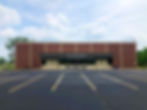top of page

Stephen Bell Elementary
Grades K-2

Bell Creek Intermediate
Grades 3-5

Jake Andrew Chappars Memorial Play Place
Playground at Bell Creek Intermediate

Stephen Bell Elementary
Grades K-2
1/5
HB920 And Why It Matters

Here are the school levies that are currently in effect for BSS, by year they were voted in and how much they were voted in for. They are NO longer worth that much. Remember 'Effective Millage' and that the 1981 levy that they were trying to replace last May was voted in for 7.5 mils originally and is now only worth 1.67 mils. The point of this chart is to show how regular levies are in Ohio, and also how varied the levy millages can be from one levy to the next. Here is our data source. It lists ALL of Greene County's property taxes so you can even compare BSS to other school districts.

So what does all this mean? It means that taxpayers and schools are both trapped in a cycle of repeat levies whether they want to be or not. This is not a secret or hidden ploy to rob taxpayers of their hard-earned dollars. It is an evil required by the state of Ohio, and will be until such time as the laws change regarding how schools are allowed to fund themselves. Here is another school district's attempt to explain the same concepts we've discussed here.
Now, will the levies always be for the same amount? Who knows? The amount a school asks for when it puts a levy on the ballot has to do with many factors. These are a few we could think of off the top of our heads:
-
How big has the city grown in the interim? If many new developments are put in, a small rate levy would generate the same net income as a higher rate levy among a smaller population.
-
The student population would factor in. How many new students are they paying for? Or maybe the student body has declined and the schools need less to pay all their bills.
-
How much state funding our school system is getting. Currently BSS gets $3,195 per student from the state, while lower income areas like Dayton Public get a MUCH higher per student rate. The state expects wealthy areas like Bellbrook-Sugarcreek to foot a much higher percentage of the cost of educating a child. If that were to change or the state were to provide our area with more money, it would reduce the amount of funding the schools would need from local taxpayers so the levy millage could be lowered.
-
Inflation is also a key factor. The expectation is that inflation is about 2% a year. If it stalls out, the school may not need a big levy, or may not even need a levy at all for a while. If we go through a recession or depression, it will affect the schools as much as it would affect the rest of us.
So, while the truth is that the school will likely be back with a levy on the ballot in 4 to 5 years, there is no guarantee how much they'll need. It will entirely depend on many factors. There is no way to assert how much a school will need at that time. To do so would be inaccurate at best and, at worst, an outright lie. Unless someone has a crystal ball and the power to see into the future, there is no way to know what the situation our community, country, and schools will be in four, eight, or twelve years from now.
There is something we, as community, should consider before the next levy is discussed. Schools can put an income tax levy on the ballot that might alleviate some of the tax burden on the elderly property owners with no children in the district anymore, but would increase the tax burden on anyone still making an income, young or old. BSS did attempt to pass an income tax levy instead of a property tax levy in the late 2000s, and it was very soundly defeated. They have resorted back to asking for property tax levies due to this. If we, as a constituency, would prefer to see an income tax in the future, we need to make sure the school knows this.
bottom of page

